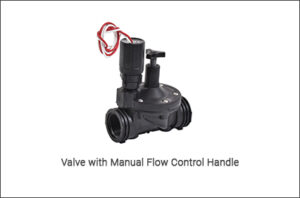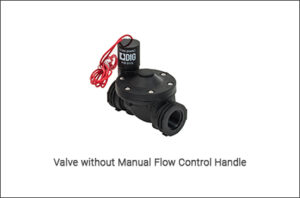The Manual Flow Control Mechanism
by Stuart Spaulding —
CLIA Certified Landscape Irrigation Auditor Training & Communications Manager at DIG Corp.
What it is, what it does, and how to use it
If there is an electric irrigation valve installed on your property, there is a good chance it is equipped with a wheel or handle (or screw), located on the top of the valve. This is called the manual flow control handle. This “handle” can be turned (left or right) to adjust the volume of water flowing through the valve. Not all electric irrigation valves are equipped with this optional feature.


Please read on to learn more about this often-unexplained mechanism; the pros and cons, how it can be used to reduce water waste and more tips on maximizing the benefits of this common component of automatic irrigation control valves.
- The mechanism functions just like the handle on a faucet; turn it clockwise to reduce the flow, counterclockwise increases the flow of water passing through the irrigation valve.
- The “handle” that turns could be in the shape of a wheel, a cross, a star, or triangle or it could be a screw that is contained by the valve cover (bonnet).
- The flow control is most useful for “fine tuning” a sprinkler system, i.e., reducing overspray (and fogging) and it is typically used to lower the operating pressure on sprinkler irrigation systems where high pressure is a concern.
- The flow control does not provide significant benefit to drip systems, and many drip zone valves do not include this optional feature.
- The flow control (if available) on a drip system valve should be set to be about 2 turns down from the maximum.
- Adjustments to the valve’s flow control should only be made when the valve is opened electrically via the controller or timer.
- The flow control can be a source of problems/trouble. Gardeners and others may turn it down while working and then fail to turn it back open before leaving.
- The flow control cannot function as a booster pump; the maximum flow through the valve can never be increased, but only decreased, by adjusting the flow control.
- Valves without flow control are inherently less problematic, there are fewer parts and fewer opportunities for things to go wrong.
Thank you for reading! We hope you have learned more about this valve option and that this knowledge will be useful in your future irrigation endeavors!

